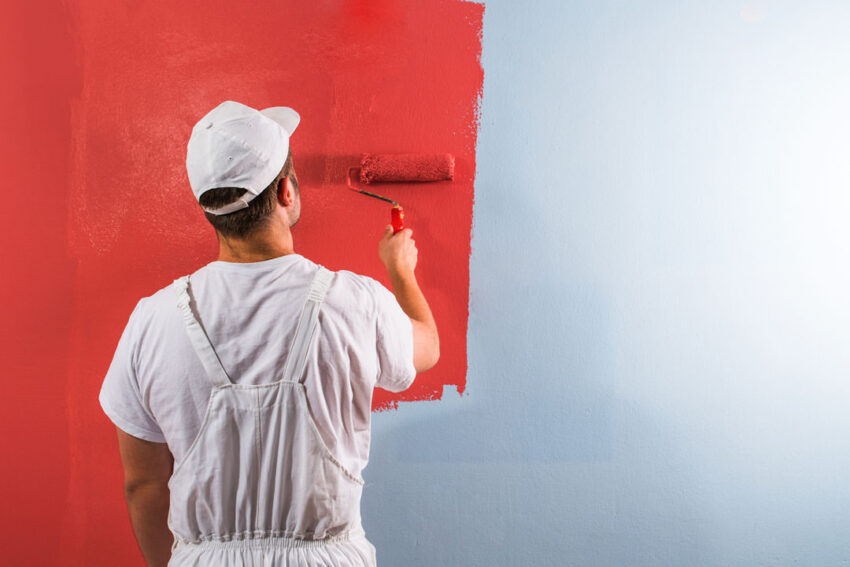When it comes to decorating house painters Adelaide small spaces, choosing the right color scheme is essential. The colors you select can make a room feel larger, more open, and inviting, or they can have the opposite effect, making the space feel cramped and overwhelming. Understanding how different colors and combinations affect the perception of space can help you make the most of your smaller rooms. This article explores the best color schemes for small spaces, offering tips and ideas to help you create a comfortable and visually appealing environment.
1. Light and Neutral Colors
Light and neutral colors are among the most popular choices for small spaces because they reflect more light, making the room appear brighter and more expansive. Shades like white, beige, soft gray, and pale pastels create an airy, open feel that helps to visually expand the boundaries of a small room.
White: A classic choice, white walls can make any room feel larger. It creates a blank canvas that allows other elements in the room, such as furniture, artwork, and accessories, to stand out. Additionally, white reflects light, enhancing natural light and making the room feel more open.
Beige and Soft Gray: These subtle shades add warmth to a small space without overwhelming it. Beige and soft gray are versatile and can complement a variety of decor styles. They also pair well with other colors, allowing you to introduce accent hues without overpowering the room.
Pastels: Soft pastel colors, such as light blue, mint green, or pale pink, bring a touch of color to a small space while maintaining a light and airy atmosphere. These colors can add personality and charm without making the room feel closed in.
2. Monochromatic Schemes
A monochromatic color scheme involves using different shades and tones of the same color. This approach can create a harmonious and cohesive look that helps unify a small space. Monochromatic schemes work well in small rooms because they reduce visual clutter and create a streamlined, sophisticated appearance.
For example, a room decorated in varying shades of blue—from pale sky blue on the walls to deeper navy accents—creates a sense of depth and continuity. The subtle variations in tone prevent the space from feeling flat, while the consistent color keeps the room from feeling too busy.
3. Cool Colors
Cool colors, such as blues, greens, and purples, tend to recede in a space, making walls appear to move away from you. This optical illusion can make a small room feel larger and more expansive. Cool colors also have a calming effect, which can make a small space feel more comfortable and inviting.
Blue: Light blue is particularly effective in small spaces, evoking the feeling of sky and water, which naturally expands the perceived space. It’s a great choice for bedrooms and bathrooms, where a tranquil, open atmosphere is desired.
Green: Soft, muted greens can bring a sense of nature indoors, helping a small space feel fresh and vibrant. Green pairs well with other natural elements, such as wood or stone, enhancing the organic feel of a room.
4. High-Contrast Schemes
While light colors are often recommended for small spaces, high-contrast color schemes can also work effectively. Combining light and dark colors can create a dynamic look that adds depth and interest to a room. For example, pairing white walls with dark trim or furniture can make the lighter areas appear even more spacious.
Another option is to use a dark accent wall in a small room. While it might seem counterintuitive, a single dark wall can add depth and make the room feel larger by pushing the wall away visually. The key is to balance the dark color with lighter hues in the rest of the room to avoid a claustrophobic feel.
5. Using Color to Highlight Architectural Features
In small spaces, it’s important to make the most of the architectural features available. Use color to highlight elements like moldings, built-in shelving, or alcoves. Painting these features in a different shade than the walls can draw attention to them, adding character and depth to the room.
For instance, painting moldings in a slightly darker shade than the walls can create a subtle contrast that enhances the sense of space. Similarly, painting the back of built-in shelves in a contrasting color can add depth and interest without overwhelming the room.
Conclusion
Choosing the right color scheme is crucial for making small spaces feel larger, more inviting, and aesthetically pleasing. Light and neutral colors, monochromatic schemes, cool colors, high-contrast combinations, and strategic use of color to highlight architectural features can all help you achieve the desired effect. By carefully selecting and applying these color strategies, you can transform even the smallest of spaces into a cozy, stylish retreat that feels much larger than it is.

